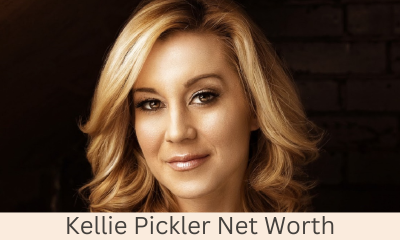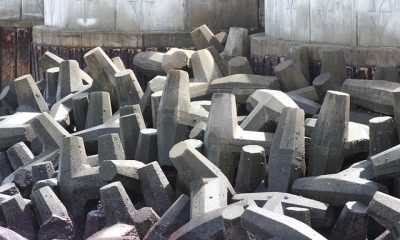Business
The Comprehensive Guide to Fiberglass-Free Mattresses

The search for a comfortable and safe mattress is a top priority for many individuals, especially when it comes to the materials used in its construction. One material that has garnered attention and concern in recent years is fiberglass, which is found in some mattresses as a fire barrier. In this comprehensive guide, we will delve deep into the world of fiberglass-free mattresses, exploring the reasons behind the controversy, alternative materials, and the best options available in the market for those seeking a mattress without fiberglass.
Understanding Fiberglass and Its Controversy
Fiberglass is a composite material made from plastic reinforced with glass fibers and synthetic chemicals. It is commonly used in various applications, including home insulation and mattresses, due to its effectiveness as a thermal barrier. However, concerns have arisen over the potential health risks associated with fiberglass exposure, particularly when it comes to mattresses.
Why is Fiberglass Used in Mattresses?
Mattresses manufactured in the U.S. are required to meet specific safety criteria related to flammability. In case of a fire, fiberglass melts and coats the mattress’s insides, preventing the flame from spreading. This material was adopted as an alternative to chemical flame retardants, which were later banned due to toxicity concerns. Fiberglass became a popular choice for manufacturers, providing an affordable and non-toxic fire barrier.
Fiberglass Exposure and Health Concerns
While fiberglass serves as an effective fire safety feature, concerns arise when it escapes from the mattress. Exposure to fiberglass can lead to symptoms such as coughing, sore throat, red eyes, stomach issues, and skin irritation. While these symptoms are not considered severe, they can impact one’s quality of life, especially since fiberglass particles can be challenging to eliminate from a living space once released.
Alternatives to Fiberglass in Mattresses
Fortunately, there are several alternatives to fiberglass available for those seeking a safer and more eco-friendly mattress option. These natural materials can provide the necessary fire resistance without the potential health risks associated with fiberglass.
Wool
Wool is an excellent alternative to fiberglass, as it is naturally flame-resistant and can effectively slow the spread of fire. It also offers additional benefits such as temperature regulation and moisture-wicking properties, ensuring a comfortable sleep environment.
Plant Fibers
Plant fibers, such as cotton and cellulose, can also serve as fire barriers in mattresses. These materials are sustainable and eco-friendly, providing a natural and safe option for fire resistance.
Silica
Silica is another alternative to fiberglass in mattresses, offering fire resistance without the health concerns associated with fiberglass exposure. This naturally occurring material is often used in combination with other natural fibers to create a safe and effective fire barrier.
Factors to Consider When Choosing a Fiberglass-Free Mattress
When searching for a fiberglass-free mattress, it is essential to consider several factors to ensure you find the perfect option for your sleep needs.
1. Transparency and Certifications
Look for mattress brands that are transparent about their materials and manufacturing processes. Certifications such as CertiPUR-US®, GOTS, and GOLS can provide assurance that a mattress is free of harmful chemicals and materials, including fiberglass.
2. Construction and Materials
Consider the construction and materials used in a mattress to ensure it meets your comfort and support preferences. Options such as memory foam, latex, innerspring, and hybrid mattresses can offer varying levels of support, conforming, and motion isolation.
3. Firmness and Sleep Position
Choose a mattress with the appropriate firmness level for your preferred sleep position. Side sleepers typically require a softer mattress, while back and stomach sleepers need a firmer surface for adequate spinal support.
4. Budget
While fiberglass-free mattresses can be more expensive than those containing fiberglass, there are still affordable options available. Determine your budget and search for a mattress that provides the safety and comfort you desire without compromising on quality.
5. Warranty and Sleep Trial
Ensure the mattress you choose comes with a comprehensive warranty and sleep trial period. This will allow you to test the mattress in your own home and ensure it meets your expectations while providing peace of mind regarding its durability and performance.
Frequently Asked Questions
1. Why is fiberglass used in mattresses?
Fiberglass is used in mattresses as a flame barrier to meet safety standards and provide protection in case of a fire. It is an affordable and non-toxic alternative to chemical flame retardants, which have been banned due to health concerns.
2. Does memory foam contain fiberglass?
Memory foam itself does not contain fiberglass. However, some memory foam mattresses may have a fiberglass layer as a fire barrier. It is essential to research the specific mattress you are considering to ensure it is free of fiberglass.
3. How can I tell if my mattress has fiberglass?
Manufacturers may not openly advertise that their mattresses contain fiberglass. However, you can often spot signs of a mattress with fiberglass by looking for terms such as “glass wool” or “glass fibers” in the product description. Additionally, if a manufacturer emphasizes not removing the mattress cover, this could indicate that the mattress contains fiberglass.
4. What mattresses don’t use fiberglass?
Organic latex mattresses, eco-friendly mattresses, and many memory foam, hybrid, and innerspring options are available without fiberglass. It is essential to research specific brands and models to ensure they are free of fiberglass.
5. Do all mattresses have fiberglass in them?
No, not all mattresses contain fiberglass. As awareness of the potential health risks associated with fiberglass exposure has increased, many manufacturers have turned to alternative materials for fire barriers, such as wool, plant fibers, and silica.
Conclusion
The search for a fiberglass-free mattress can be a daunting task, but with the right information and guidance, it is possible to find a safe and comfortable sleep solution. By considering factors such as transparency, materials, firmness, budget, and warranty, you can confidently choose the perfect mattress to meet your sleep needs without the potential health risks associated with fiberglass exposure. With our comprehensive guide and top fiberglass-free mattress recommendations, you are well on your way to a safer and more restful night’s sleep.


















































